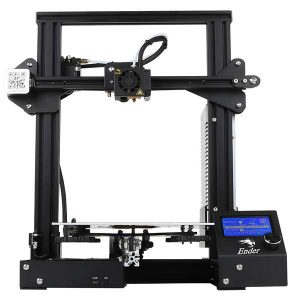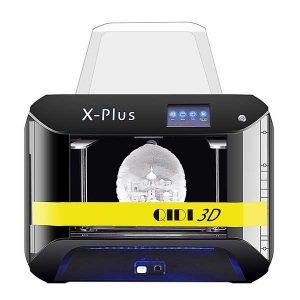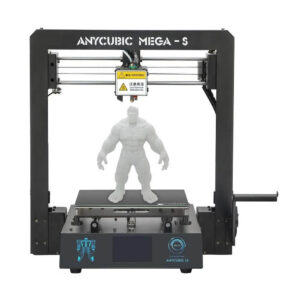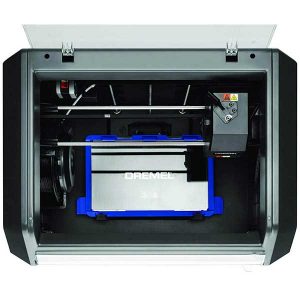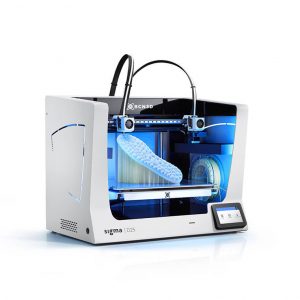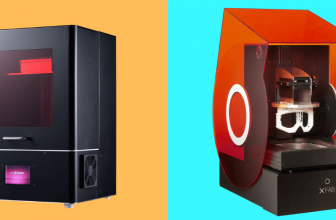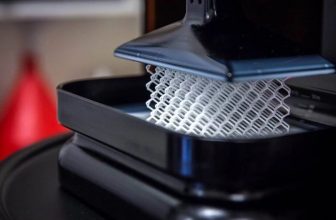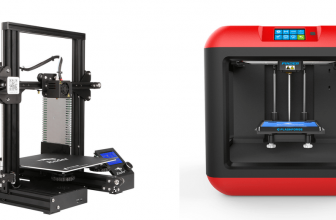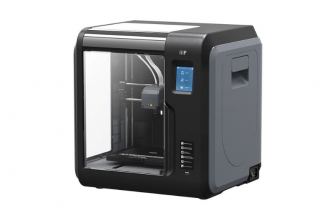PETG is a modified version of PET in which the “G” stands for “Glycol,” a molecule added during the polymerization process to make it less fragile, more durable, and easier to use.
This version is suitable for additive manufacturing; it is generally translucent but also comes in a variety of colors. When compared to PLA, PETG has superior mechanical properties as well as resistance to moisture, chemicals, and heat.
Comparison Chart
| Name | link | Nomination | Rating |
|---|---|---|---|
| Creality Ender 3 | Easy and quick assembled | 9 | |
| Monoprice Maker Ultimate 2 | Fully assembled | 8.2 | |
| QIDI TECH X-Plus | High precision | 9 | |
| Anycubic MEGA S | User-friendly | 8.4 | |
| DREMEL DigiLab 3D45 | Higher quality prints | 8.9 | |
| Artillery GENIUS | High efficiency | 8.8 | |
| BCN3D Sigma D25 | Advanced features | 8 | |
| Ortur Obsidian | High compatibility | 8.4 | |
| Renkforce PRO3 | High print quality | 7 | |
| Bresser REX | Easy-to-use | 9 |
Best PETG 3D Printers
Creality Ender 3
|
The Creality Ender 3 is one of the most popular machines on the market due to a number of features that are hard to come by in even more expensive PETG printers.
Uses:
- One of the most appealing aspects of the Creality Ender 3 is its extremely low price.
- The Creality Ender 3 has a small heated print bed measuring 220 x 220 x 250mm.
- Another impressive feature of the Creality Ender 3 is its ability to fully recover and resume a print after it has been disconnected or has lost power.
- An LCD display with a control wheel is located on the right side of the Creality Ender 3 frame.
- Creality recently made the Ender 3 open source.
- Extremely affordable
- Print volume is adequate
- It is possible to produce high-quality prints
- The use of open-source software
- The use of a narrow filament path improves compatibility with flexible filament
- Simple to assemble
- Design is compact
- An increasing number of upgrades are now available for 3D printing
- Uneven base causes a slight wobble, making it difficult to level
- Adhesion is sometimes required to get prints to adhere to the bed
- Calibration must be done manually
- The flimsy bed must be re-leveled from time to time
Monoprice Maker Ultimate 2
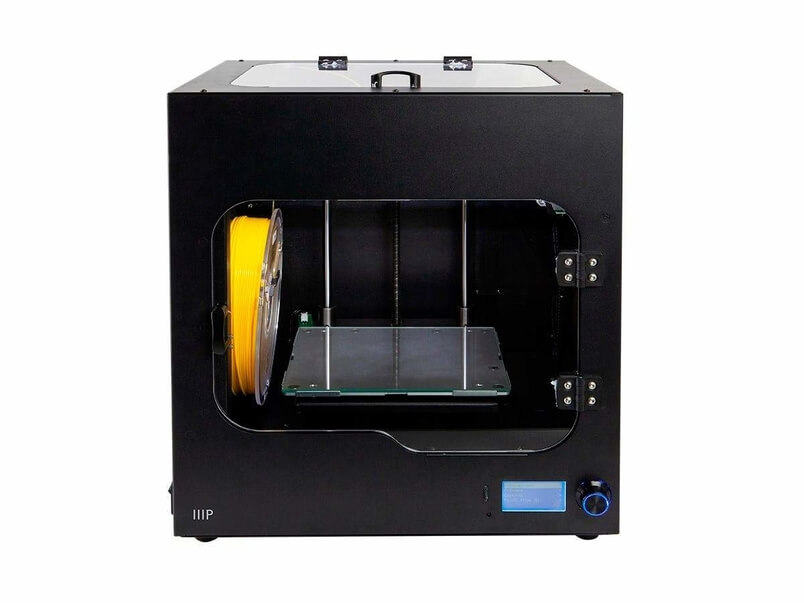
Monoprice’s Maker Select Ultimate 2 is a low-cost desktop PETG 3D printer. Monoprice, based in the United States, is a manufacturer of 3D printers.
The build volume of this desktop 3D printer is 200 x 150 x 150 mm. The Monoprice Maker Ultimate 2 is a completely new 3D printer rather than an update.
It comes fully assembled and configured, and its key features of direct drive extruder and enclosed design give it nearly limitless capabilities. This great entry-level 3D printer will not limit you as you gain experience.
Uses:
- Conditions such as inconsistent ambient temperature or high humidity can cause prints to fail if you go beyond PLA. The temperature management in the Ultimate 2 is excellent. The enclosure keeps the temperature stable, preventing common 3D printing failures like warping.
- The built-in inductive sensor in the Maker Ultimate 2 is said to automatically level the print bed, ensuring proper adherence to the built plate.
- It promotes the glass build plate as a guarantee of a flawless first layer with the flattest possible surface. This, in conjunction with the auto bed leveling, should result in the best possible results.
- Features a lighting system that is thought to compensate for the printer’s enclosure making it difficult to see one’s print.
- 3D printer that is simple to use and comes pre-assembled and calibrated
- Automatic leveling for simple calibration
- Extruder with direct drive
- Compatible with a wide range of filaments such as ABS, ASA, TPE, and TPU
- The enclosed design shields your print from environmental factors like low room temperature/drafts
- Design that is both compact and lightweight
- Some people may find the provided user manual to be overly technical
- Some users may find it a little too noisy
QIDI TECH X-Plus
|
The Qidi Tech X-Plus 3D printer strives to lead those interested in trying out the technology by providing amazing functionalities at an affordable price.
Because the machine is already fully assembled, there is not much you need to do to assemble it. As a result, you will not need much time to get started with your first print.
It significantly reduces the user’s effort in configuring the machine prior to its first use. Furthermore, bed leveling is not automatic, but rather simple and straightforward. With the press of a single button, your bed is leveled.
Uses:
- The PETG 3D printer has two different extruder options to meet the needs of semi-professional users. These are interchangeable, with varying extruder configurations.
- Not to be confused with two different build plates; the 3D Printer does not have two separate build plates, but rather a single plate that can be used on both sides.
- The 3D printer employs two separate filament holders to meet the requirement for two different filament types. The Qidi Tech X-Plus, with its two different spool holders, elevates the user experience to new heights.
- This 3D printer accepts third-party filaments.
- Sensing a need, Qidi Tech X-Plus has brought a fully assembled and enclosed chamber for both new and experienced users.
- The enclosed chamber of the 3D Printer is designed to produce very little noise.
- The 3D printer has an advanced cooling system that helps bring out the best in 3D models.
- Features an easy-to-use touch screen that serves as a model for many; the 5-inch color touchscreen is straightforward and simple to use.
- You can prevent your 3D models from failing due to a power outage. The print will be paused and saved until power is restored.
- With its filament sensor, this 3D printer is intelligent enough to detect when you have run out of material.
- The 3D printer can use a variety of filaments.
- The build volume is more than adequate for the majority of applications
- It generates 3D models that are precise and accurate
- Simple to set up and suitable for beginners
- Documentation and customer service that is poorly translated
- In some cases, the touch screen may also respond slowly
Anycubic MEGA S
|
The Mega S PETG 3D printer is a model from the Chinese manufacturer Anycubic, which was founded in Shenzen in 2015 and has since grown to become one of the industry’s most renowned suppliers.
With its low price, the Mega S falls into the category of low-cost devices. This can also be attributed to the fact that as a buyer, you must assemble the Mega S yourself; kits are typically less expensive than fully assembled 3D printers.
Uses:
- The Mega S from Anycubic is built to last, and it includes a sensor that constantly monitors the amount of filament and alerts you when it needs to be replaced.
- The Anycubic Mega-S 3D printer has a large base with a full-color touchscreen.
- According to Anycubic, the Anycubic Mega-extruder has been upgraded to be more compatible with flexible filaments such as TPU.
- In keeping with the Mega-incredible S’s value, this machine comes with a plethora of useful accessories and extras. The Anycubic Mega-S comes with extra nozzles of various sizes, tools for clearing blockages, sample filament in various colors, an SD card with pre-loaded projects, and even a brand new hot end.
- For a low-cost printer, the Mega S produces good print results.
- The Mega S kit is relatively quick and simple to put together; no prior experience is required.
- The print bed quickly heats up.
- The Mega S 3D printer can print with a variety of filaments.
- The device is very dependable and has a low error rate.
- Because of the open printing chamber, the printer is relatively loud during the printing process.
- Metal PLA printing is not possible with the Mega S. Medium print area.
DREMEL DigiLab 3D45
|
With a nearly 90-year legacy to uphold, DREMEL 3D printers are designed to be dependable and long-lasting machines. DREMEL’s DigiLab brand products are suitable for assisting people to get started with 3D printing and take more advanced steps with the technology.
The DREMEL 3D45 is one of the company’s higher-priced 3D printers for cookie cutters. It has a build volume of 254 x 152 x 170 mm and an all-metal-hot-end direct drive extruder (capable of reaching temperatures of up to 280°C).
Uses:
- The 3D printer’s heated bed and removable build platform allow for a maximum build volume of 10 x 6 x 6.7 inches.
- The bed leveling system is semi-automatic and uses a straightforward two-point system. The leveling process is greatly simplified as a result of this.
- The 4.5-inch color IPS touchscreen on the DREMEL DigiLab 3D45 instructs users on how much each knob should be turned to even out the print area.
- The DREMEL DigiLab 3D45 has a precision of 50 microns when printing objects.
- Easy to set up and use.
- The print quality is excellent when proprietary materials are used.
- Developed to increase safety and dependability.
- A comprehensive 3D printing ecosystem designed specifically for educational purposes.
- Print quality suffers when third-party filament is used.
- It has a hard time with more advanced materials like Nylon.
- A closed system provides security and dependability, but it limits creativity.
Artillery GENIUS
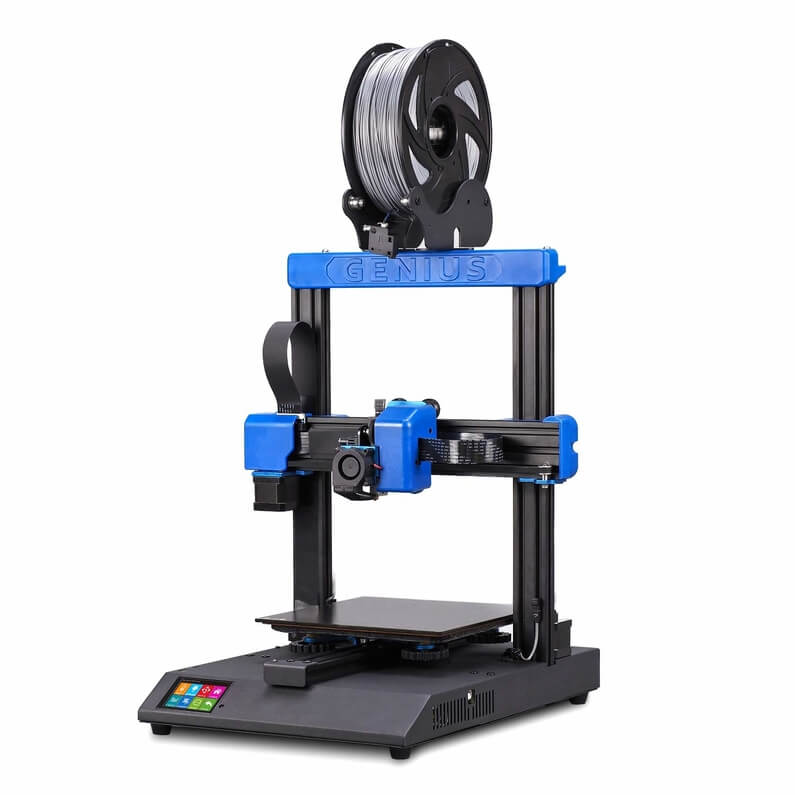
The Artillery Genius is a desktop PETG 3D printer with a decent build volume of 220 x 220 x 250 mm (8.66 x 8.66 x 9.8 inches), which means it can print a single large model or several smaller ones at the same time. It has a heated bed with a direct drive extruder.
The printer must be manually assembled and leveled, which requires the user to understand how FDM 3D printers work. Furthermore, it establishes a solid foundation for future troubleshooting expertise.
Uses:
- The build plate of the Artillery Genius is made of tempered glass and can be heated up to 130°C.
- The Artillery Genius’ heat bed has an impressive heating speed, reaching 110°C in less than 135 seconds.
- The filament sensor is located just below the spool holder on the printer’s top. If there is no more material to print with or if the filament becomes tangled or broken, the printing process is halted. After resolving the issue, the printing process can be restarted manually.
- The Artillery Genius includes a filament spool holder that must be installed on top of the gantry, so you will not have to print or buy it separately. The spool holder can be re-adjusted to accommodate different filament spool widths.
- Simple to use.
- Extruder with direct drive.
- Build plate that can be heated.
- Resume printing capability.
- Sensor for filament run out.
- Upgrade potential is limitless.
- Touchscreen that responds.
- Material compatibility is broad.
- Simple to assemble.
- There is no enclosure.
- There are no wireless connectivity options.
- Overabundance of layer adhesion
- It is difficult to re-adjust the spool holder.
- Nozzles of poor quality.
- Some of the wires are far too short and unstick far too easily.
BCN3D Sigma D25
-
...
|
If you want to work in 3D printing, you can start, scale up, or continue your experiments with this PETG 3D printer.
Uses:
- PLA, PETG, TPU 98A, and PVA are some of the filaments that can be used by the printer.
- The printer makes use of an aluminum build plate and a silicone thermal pad, both of which are known for their ability to distribute heat evenly.
- The printer’s manufacturer has optimized the firmware calculation system for calibration, allowing for more precise level adjustment.
- The Sigma D25 3D printer includes not only the most recent connectivity features, but also a free workflow on the BCN3D cloud platform.
- The Bondtech company installed a high-tech dual drive gear in the manufacturer of this printer.
- The addition of these dual-drive gears gives the printer’s user more control and sharper details.
- When the filament runs out, the sensor tells the printer to stop 3D printing until the filament is reloaded.
- The Sigma D25 is a desktop 3D printer that, like any other desktop 3D printer, can vibrate when 3D printing a part or functional prototype.
- The Sigma D25’s manufacturers included a multilingual touchscreen to facilitate interaction between the user and the printer, in addition to ensuring a consistent printing procedure and reliable extrusion.
- Works in a variety of modes
- Parts can be produced in large quantities
- Wireless printing option is there
- Closed print chambers are notorious for making user post-processing difficult
Ortur Obsidian
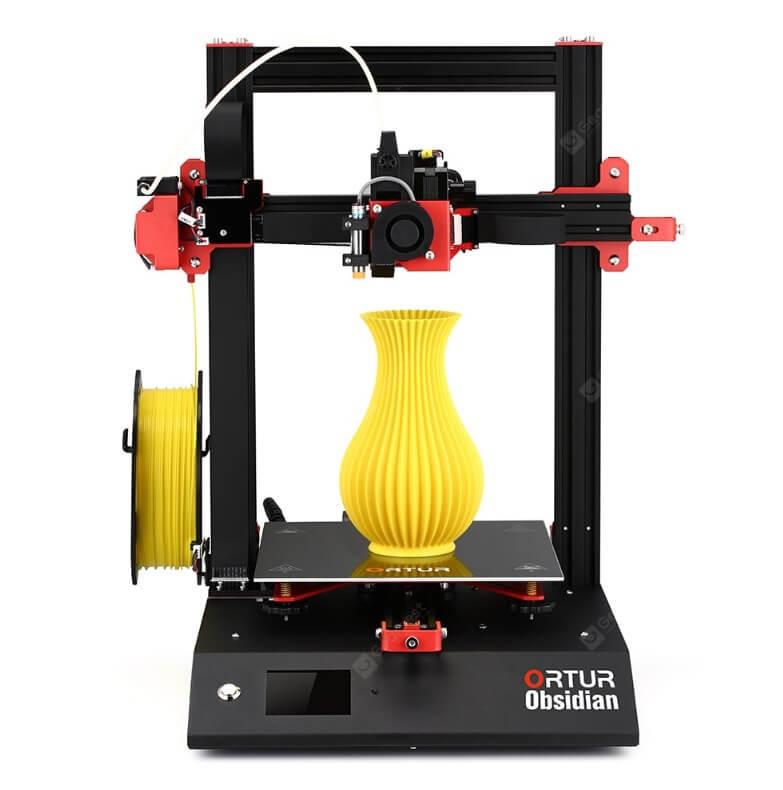
The Ortur-4 is a high-speed PETG 3D printer that prints two to three times faster than comparable machines.
This cleanly designed, solid machine, manufactured by Dongguan Ortur Intelligent Technologies Co, a Chinese 3D printer manufacturer, has a steel casing structure and some excellent features.
Uses:
- Ortur claims it can print two to three times faster than other popular FDM 3D printers and can print at speeds of up to 150 mm per second in real life while maintaining print quality.
- This printer’s accuracy is improved by its dual-axis linear guide rails on each axis.
- The wires are expertly concealed throughout the Ortur-4.
- When you do not have to level the bed yourself, it is a lot easier. The Ortur-4 automates this process by calibrating 9 points on the hotbed.
- Resume printing is another important tool in a printer’s arsenal because it ensures that power outages or pauses do not affect your print and that it can resume work when the power is restored.
- If the printer becomes too hot, it will automatically stop printing until it has cooled down sufficiently.
- Filament detection pauses the print until the empty spool is replaced.
- Lightweight, portable, and noiseless
- Printing with a single click
- It is extremely simple to set up
- Simple to use
- Appropriate for home education
- Design independence
- Materials are limited
- Build volume is limited
Renkforce PRO3
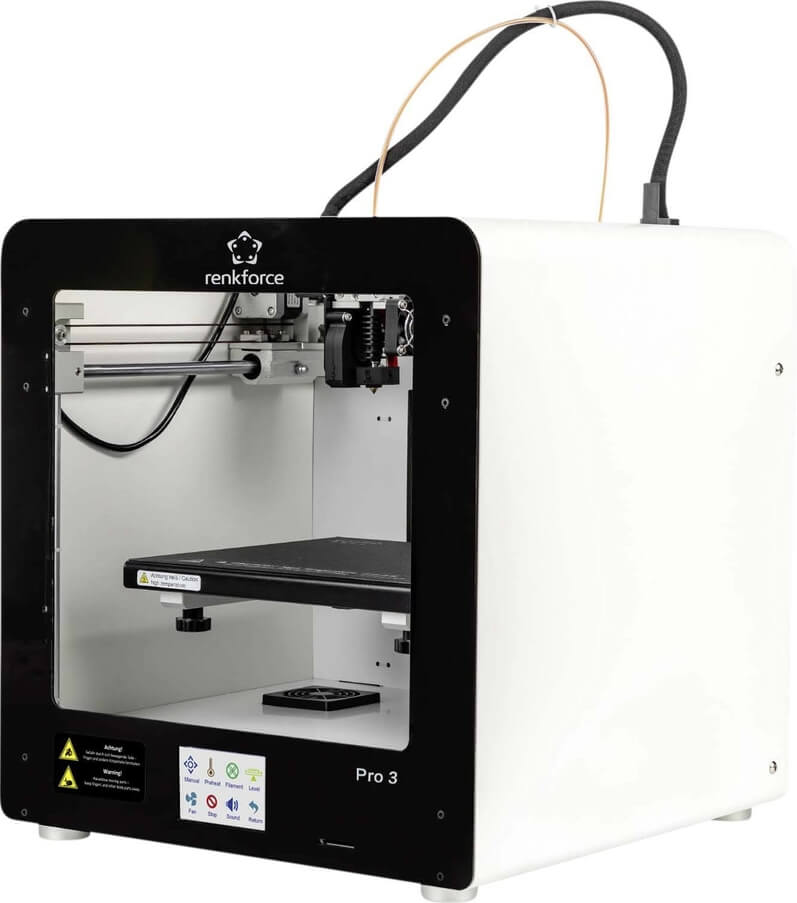
It is advantageous to have a completely closed casing with a stable frame construction made of aluminum profiles and this printer just gives you that.
Due to its sturdy construction, the Renkforce PRO3 PETG 3D printer measures 395 x 400 x 425 mm and weighs approximately 22.2 kg. The print head is precisely positioned by industrial linear guides that continue to function precisely and evenly even after years of use.
Uses:
- You can process almost any 1.75 mm filament with the Renkforce PRO3*.
- The printer works with PLA and PLA Compound (wood, aluminum, copper, bronze). ABS, PETG, HIPS, PC, PP, nylon, TPU, TPE, and carbon fiber are some of the materials used.
- The heatable build platform, among other things, allows for this level of material flexibility.
- The Renkforce PRO3 3D printer has a maximum print size of 200 x 200 x 150 mm.
- The printer is also simple to use.
- A 3.5-inch color touchscreen is used for operation, displaying a clear menu for printer operation.
- You can use an SD card to load your models into the printer and print them offline.
- The layer thickness can be set between 0.05 and 0.3 mm.
- A removable magnetic mat, which you place on the print bed and remove when the print is finished, is useful for easily removing your finished models.
- Simple operation in a closed construction
- The heated print bed has a minimum layer thickness of 0.05 mm and is compatible with a wide range of filaments
- No Wi-Fi
- There is no USB interface
- There is no automatic leveling and no filament sensor
Bresser REX
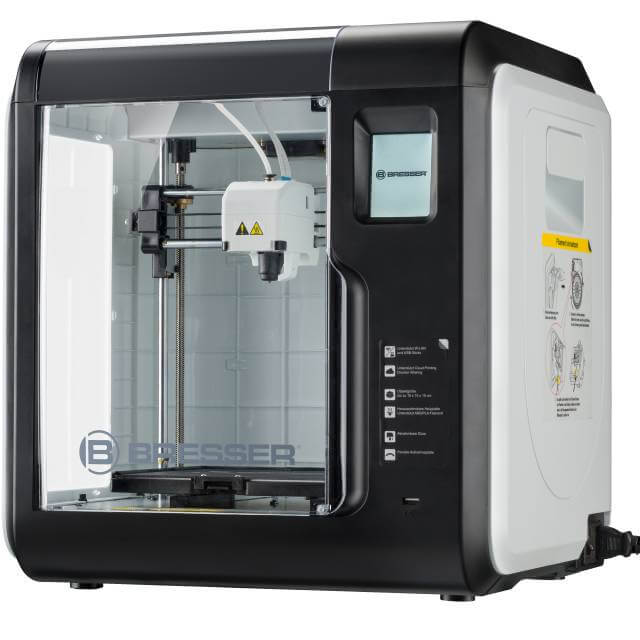
The Bresser REX 3D printer comes completely assembled. The delivery includes an instruction manual, a replacement extruder nozzle, 300 g of PLA filament in white and black, and cleaning tools.
PETG and other filaments such as PLA and ABS can be easily processed with the Bresser REX 3D printer.
The printer comes with the flashprint software, which you can use to prepare your models for printing. It works with the Windows, Mac OS, and Linux operating systems.
Uses:
- The Bresser REX*, measuring 380 x 388 x 405 mm and weighing around 9 kg, has an integrated camera for remote monitoring of your prints.
- Bresser’s patented extruder design allows you to change the filament very quickly. A HEPA filter integrated into the printer’s closed housing keeps the surrounding air clean.
- The heated build platform can also be quickly changed. The maximum build volume is 150 x 150 x 150 mm.
- For this printer, you can also use other slicer software, such as Cura.
- For data transfer, a WLAN and a USB interface are available. The Bresser REX 3D printer can also print from the cloud.
- It is controlled by a simple touch screen.
- The printer’s good features are rounded out by an 8 GB internal memory.
- Automatic filament detection is also available with the Bresser REX 3D printer.
- After inserting new filament, you can immediately resume printing your models. The printing speed is limited to 100 mm/s.
- The 3D printer also impresses with its XY-axis positioning accuracy of 0.011 mm and z-axis positioning accuracy of 0.0025 mm. The thinnest layer is 0.05 mm thick. Layers with a maximum thickness of 0.4 mm can be printed by the Bresser REX 3D printer.
- Simple operation due to the closed design
- WLAN and a USB port
- Built-in camera
- Print bed that is heated
- Filament detector
- There is no automatic leveling function
Buying Guide
Enclosed Chamber
To avoid layer separation, printing materials such as ULTEM 9085, ABS, PC, and others require an enclosed chamber.
The heat generated by the heated bed maintains a stable temperature inside the machine, and some machines have dedicated heaters to keep the printing environment warm.
High Temperature Nozzle
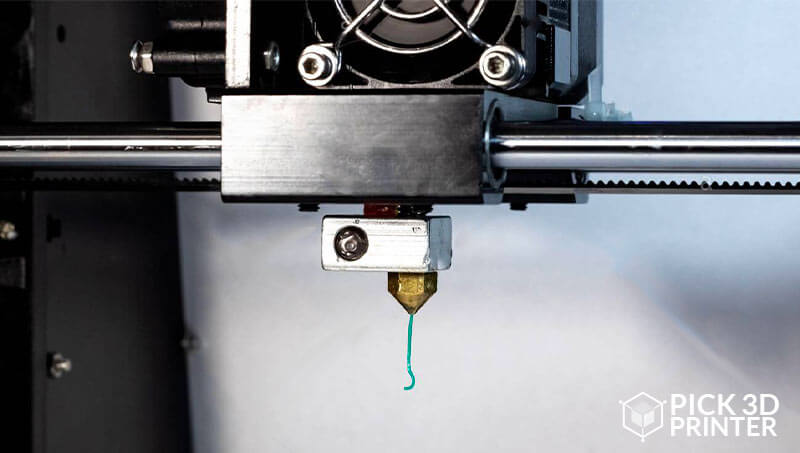
The type of 3D Printing Materials that a 3D Printer can print is determined by the temperature of the Hot end Nozzle. The clone hot end can reach temperatures of 260 degrees Celsius, while the E3Dv6 can reach temperatures of 380 degrees Celsius.
The most important factor in 3D printing is the nozzle temperature. The clone Hot ends come with bulb sensors, which are a little more difficult to install and are prone to falling out of the mounting slot, causing temperature readings to fluctuate.
Automatic Bed Leveling
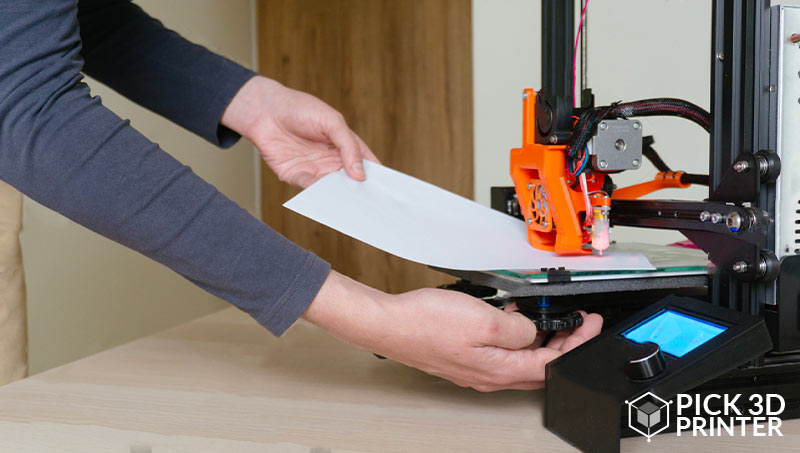
This feature notifies the machine if the bed is slightly tilted, which must be corrected for a smooth first layer. It also keeps the nozzle from colliding with the build plate.
Because the frequency of calibration on Cartesian 3D printers is higher, auto bed leveling is necessary. Delta Mechanism 3D Printing Machines, on the other hand, require less frequent calibration, so it is not required, but it is nice to have.
Connectivity
This function is not necessary if you only plan to get one or two machines, but if you plan to start a farm, you will see how useful it is.
You will save time searching for files in directories, and you will be able to manage a lot more computers with just one computer.
FAQs
Why Would I Need To Use PETG Filament?
PETG is a strong, flexible, and recyclable material. It is not brittle, will not warp or shrink, and can be printed on glass without the use of glues. It does not absorb moisture or water from the air. Overall, it has superior properties to PET.
At What Temperatures Should I Print PETG Filament?
While the exact temperature will vary depending on your printer, the filament you’re using, and your preferences, the recommended temperature range for PETG filament is 220-245°C, and the recommended bed temperature is 70-75°C.
If you are using glass, you are not required to use a heated bed; however, it does make the process much easier.
What Should My Retraction Settings Be?
Your printer’s retraction settings (speed and length) will vary greatly depending on the type of extruder you are using and the filament you are using.
Conclusion
PETG is now widely available as a filament for FDM 3D printers and has gained popularity in a variety of professional applications due to its material properties.
Designers and engineers can use its transparency, moisture resistance, and chemical resistance to create great functional prototypes such as liquid containers, signage and graphic displays, electrical equipment enclosures, and so on when working on new concepts.
The most obvious application of PETG 3D printing is for the design and prototyping of packaging for consumer products that will later be made of some form of PET when mass production begins. The above-mentioned guide will help you start with the best PETG printer

